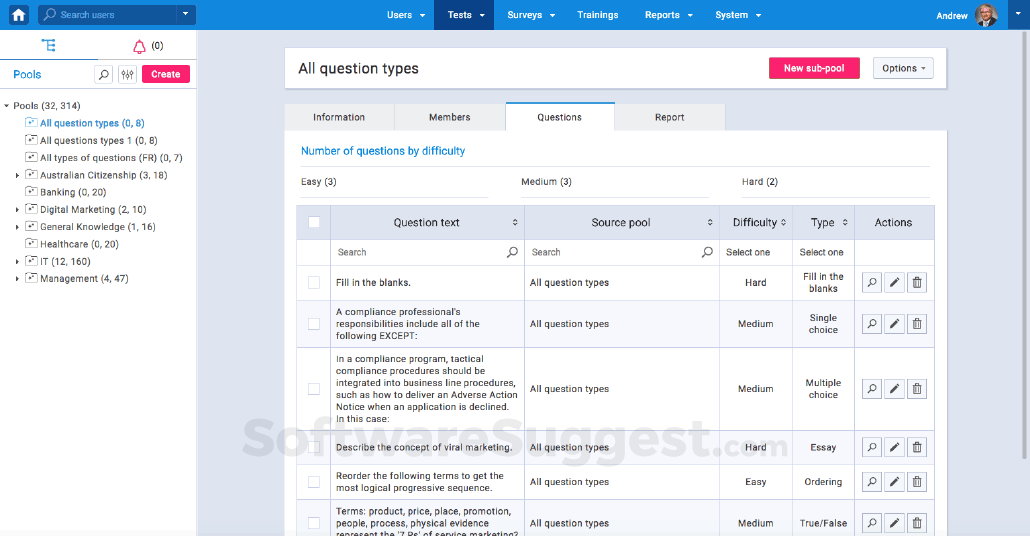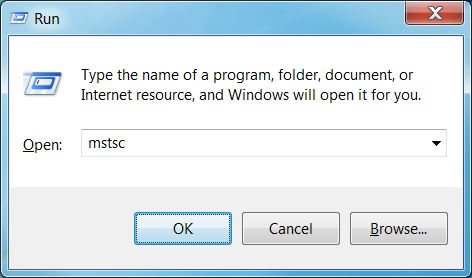Have you ever encountered a problem where the Remote Desktop session randomly freezes on Windows 10? Reportedly, this issue can be attributed to using the UDP protocol instead of TCP.
Like previous versions of Windows, Windows 10 Home offers a client for connecting to Remote Desktop servers, but not the Remote Desktop server itself. To host a Remote Desktop server using Windows 10’s built-in Remote Desktop feature, you’ll need Windows 10 Professional. Wndows 10 Home is Remote Desk Client only, so you cannot remote to it from another machine. What version of Windows 8 did you upgrade from? I was under the impression you also needed the Pro or above version of Windows 8 to be remote desktop host. As you can see, setting up a Remote Desktop session using the new Remote Desktop universal app for Windows 8.1 and Windows 10 really works like magic! It will surely be of help to you especially if you need to access your work computer in the office even if you are just at home anytime! Get started with the Windows Desktop client.; 7 minutes to read; H; e; d; n; In this article. Applies to: Windows 10, Windows 10 IoT Enterprise, and Windows 7. You can use the Remote Desktop client for Windows Desktop to access Windows apps and desktops remotely from a different Windows device. Aug 22, 2017 If you're reading this you're probably aware that Microsoft Remote Desktop is disabled in Windows 10 Home edition and is only available in Windows 10 Pro and Enterprise editions.
Given that there has been no official fix for this problem, there’s no guarantee that switching to TCP will fully prevent RDP from freezing. However, there is no harm in trying.
Here are three methods that may help you unfreeze RDP on Windows 10.
Warning: exercise caution when modifying the Windows Registry. Do not change any registry keys unless instructed to do so. Incorrectly editing the registry may cause system-wide problems that will require performing a clean reinstall of the OS.
Fix RDP freezing via Command Prompt
- Run Command Prompt as administrator on the client machine.
- Run the following command: reg add “HKLMsoftwarepoliciesmicrosoftwindows ntTerminal ServicesClient” /v fClientDisableUDP /d 1 /t REG_DWORD
- Restart the client machine.
Looking for an easy way to connect to Windows computers remotely? FixMe.IT is the world’s most reliable and cost-effective remote desktop solution that allows connecting to any remote PC in just 3 easy steps.
Here’s how it works.

Fix RDP freezing via Registry Editor
- On the client machine, press Win+R to open the Run box. Type in regedit and click OK.
- Navigate to HKEY_LOCAL_MACHINESOFTWAREPoliciesMicrosoftWindowsNTTerminal ServicesClient.
- Right-click the Client folder and select New > DWORD (32-bit) value.
- Name the new DWORD as fClientDisableUDP. Set the Value data to 1, Base to Decimal.
- Reboot the client machine.
Fix RDP freezing via Group Policy Editor
- Press Win+R to open the Run box. Run gpedit.msc.
- Navigate to Computer Configuration > Administrative templates > Windows components > Remote Desktop Services > Remote Desktop Connection client.
- Enable the Turn off UDP on client setting.
Did you find this article helpful? See more Windows tips & tricks on our blog and join us on Facebook, Twitter or LinkedIn to get all the latest updates as they happen.
Related Posts
Hello, I am cedrozor the author of Myrtille, a project that started in 2007 as a challenge for fun with former work colleagues, on our spare time. The goal was to provide a native web access, for a simplified user experience, to remote servers and applications. We wanted legacy desktop applications to be as easy to use as a website, accessible from a single URL, making them literally “web apps”.
It was originally the idea of UltraSam, the author of UltraVNC (another well known open source project), who was before that my project manager in a teleconferencing company based in France. But instead of the VNC protocol, we focused more on RDP because the rest of the team (including me) was more into .NET/C# development and we wanted something new in the Windows environment. That said, Myrtille relies on an abstraction layer and could easily integrate VNC or any other protocol (as it was done with SSH).
We started with RDesktop, but moved quickly to FreeRDP when it was released! :)
I have tried to keep the Myrtille footprint into FreeRDP as minimal as possible. Myrtille communicates with FreeRDP through named pipes (IPC), in order to maintain a FIFO data transfer. User inputs (keyboard, mouse, touchscreen, etc.) are captured by the browser (using javascript) and forwarded through the RDP session, while display updates (regions of the screen that have changed) are compressed into PNG, JPEG or WEBP images and sent to the browser (using websocket, server-sent events (HTML5) or even long-polling (HTML4)).
Because FreeRDP is a big project, I wanted an easy way to track the Myrtille code within it (whenever I couldn’t have it into separate files). Thus, all the Myrtille code is surrounded by “#pragma region Myrtille” and “#pragma endregion” tags. This is very handy when I need to resynchronize the Myrtille fork of FreeRDP with the FreeRDP repository! Because, of course, I want Myrtille to benefit from the latest features, optimizations and bug fixes from FreeRDP! :) in this process, I may also find and fix bugs in FreeRDP, then inform the FreeRDP team.
In an earlier version (0.9.x), The Windows FreeRDP client (wfreerdp) was written in C++. It’s possible to mix C and C++ code in a single project, so I was able to keep most of the code I wrote years ago and benefit from some C++ improvements over C (OOP, GDI+ image processing, etc.).
I also wanted to have a clean separation of concern between Myrtille and FreeRDP, so each RDP connection spawns a FreeRDP process. This makes it easier to track all active connections and if necessary disconnect one by killing its process.
From the start we decided that we didn’t want any plugin, extension or whatsoever in the browser. It would be a pure HTML/JS/CSS implementation. We also wanted to avoid javascript libraries whenever possible (and reasonable), to avoid useless (and countless) dependencies and keep the code low profiled. For simple tasks (and Myrtille doesn’t require/do anything fancy), I think it’s fine (and even good) to simply use vanilla javascript. Javascript is a powerful language, constantly evolving, and I have fun learning and harnessing it. I’m also a minimalist person who loves to get its hands dirty in the engine to see how things work on a lower level! :p

It was even more difficult back in time (2007), because websockets and canvas (HTML5) weren’t available. We had to rely on XmlHttp requests, long polling and divs (HTML 4), with of course different implementations in different browsers (no typescript back then). IE was still widely used at this time, so we wanted our PoC to run on the first version that supported XmlHttp, namely IE6 (to add even more difficulty!).
That said, that was before SignalR was available to abstract and simplify network communication (automatic and transparent switching of protocols in case one of them is not available or fails). If Myrtille were to start today, I would of course make use of it (in addition to a few other libraries). Another thing I would do would be to use .NET core and the latest new stuff, in order to take Myrtille forward in the future and also have it on multiple platforms (using xfreerdp on Linux, for example). This is planned in fact, and I could use some help for it (any contribution is welcome!). Another option would be to have a commercial version of Myrtille, with a paid license to support these developments (because it’s a lot of work and I now have to earn a living, as an independent developer).
Among the upcoming features, file transfer is the next improvement goal. Microphone support is also planned. Maybe also smart cards after that. A separation of the Myrtille gateway and services is also planned, for an easier configuration of the gateway into a DMZ, and further enhance the security (the installer will allow to select the module to be installed; currently this must be done manually). Still about security, I would like to offer another 2FA out of the box (probably Google Authenticator).
Regarding the user interface, I think Myrtille also needs a little visual rework. The login page, the toolbar will be redesigned with better flat styles, colors and icons.
About deployment and integration (and devops by extension), I would like also to bring more cloud support to Myrtille; Azure obviously, because of its integration within the Microsoft/Windows ecosystem, but not only (Amazon, Google, etc.). Myrtille already have a Docker image, but there are some limitations regarding print and audio. I will also look into that.
Responsiveness is the key to a good user experience. I tried hard to chase for every millisecond I could save in the roundtrip workflow. That’s also why I wanted a lightweight javascript code from the start. The Myrtille gateway is also just that, a link between the browser and FreeRDP, maintaining the correlation between the http and rdp sessions, receiving/forwarding data from/to both sides.
Whenever possible, I try to parallelize the processing. The user inputs and display updates, for example, are asynchronous. You can have a display change resulting from a user action, or not. What is important however, is to maintain the order in which they occur. I decided to use named pipes between the gateway and FreeRDP, because they are FIFO queues and maintain such an order. XmlHttp requests and websocket messages are also delivered in order, and so are long polling DOM injections and server-sent events (SSE).
Rd Client Windows 10 Home Edition
A path for improvement would be to use hardware accelerated graphics and take advantage of the H.264/AVC encoding supported by FreeRDP. Myrtille actually relies on images (PNG/JPEG/WEBP), generated by GDI+ (win32 API, software), but this could be replaced by a video stream (MP4/OGG/WEBM, etc.), generated by FreeRDP (against hardware, or software when using a VM), and pushed from the gateway to the browser into an HTML5 <video> tag or handled by a modern web API (MediaSource, WebRTC, etc.).

Rd Client Windows
Many thanks to the FreeRDP team for this wonderful project! It is not an easy task when working with such a complex protocol and with so many changes over the years.
Rd Client Windows 10 Home

If you want to know more about Myrtille and its offered services (support, training, etc.), watch demo/tutorial videos or get in touch, you can consult our website.
